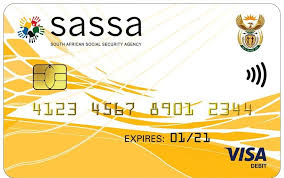The South African Social Security Agency (SASSA) has confirmed the payment dates for the Covid-19 Social Relief of Distress (SRD) grant for January 2025. Beneficiaries who are approved for this month can expect their payments to be processed between 25 and 31 January 2025.
To ensure a smooth payment process, clients can check their individual payment dates by logging into the SRD website. This step will provide clarity on the exact date when the payment will reflect in their designated bank accounts.
Key Information for Beneficiaries:
- Payment Period: 25-31 January 2025
- Check Payment Status: Visit the SRD website for personalized payment details.
SASSA continues to remind recipients to ensure their banking details are current on the system to avoid delays.

January 2025 Payment Schedule
The COVID-19 Special Relief Direct (SRD) payments in January are significant, with specific distribution dates that many rely on. These payments are scheduled to be distributed between January 25th and January 31st—two important days for millions of nationwide beneficiaries. Each date addresses different groups: the first generally caters to those who have been part of the system longer, while the later date is typically reserved for late applicants or newly approved beneficiaries.
Since many individuals depend on these funds for their day-to-day expenses, knowing when to expect them can make a big difference in managing finances.
For example, Ma’am Sibongile applied early and relies on her SRD payment by the 21st of each month. This predictability gives her a sense of security in budgeting; whether paying bills or covering grocery needs, she knows the funds will be there on time. In contrast, newcomers like Bra Thato may wait until January 28th, making financial planning more challenging.
A recent online survey revealed that approximately 65% of respondents expressed concerns regarding potential delays in their SRD payments for January 2025. This statistic shows why timely updates throughout the month are important; they serve as lifelines for those depending on this assistance to meet their basic needs.
In light of these figures, it’s vital for recipients to stay informed about any changes made by governmental agencies. Regularly checking official sources not only alleviates anxiety but also empowers individuals with crucial information to facilitate sound financial decisions.
While January’s scheduled dates offer context and relief for many, regular communication from government sources could further ease distress among families facing uncertainties. Community organizations continue to rally for clearer information regarding payment cycles and agency methods, advocating for those most vulnerable in society. Knowing what to expect can impact not only individual families but also communities at large.
Recognizing how these payments operate lays the groundwork for understanding critical details influencing who qualifies during these times of need.
Eligibility Criteria Explained
Knowing whether you are eligible for the January 2025 SRD payments goes beyond a simple yes or no answer; it involves understanding specific guidelines that must be met. These criteria ensure that the funds are directed to those who need them most and help maintain control over the distribution process under the South African Social Security Agency (SASSA).
Age Requirements
Applicants must be 18 years old to qualify for the relief grant. This requirement ensures that the assistance primarily supports adults expected to make their own financial decisions and manage their resources. It may seem straightforward, but being aware of age requirements is important, especially for young adults who might be first time applicants.
Income Thresholds
Next on the list are income thresholds, specifying that an applicant’s monthly income should not exceed R750. This figure may seem modest, reflecting a deliberate focus on supporting lower-income individuals and families. If you’re applying, it’s important to consider all sources of income—this includes any government assistance you may currently receive—because exceeding this limit could disqualify you from receiving benefits.
Employment Status
The third requirement pertains to employment status. Eligible applicants are those who are either unemployed or have experienced a loss of income due to the COVID-19 pandemic. This criterion is designed to assist those whose livelihoods have been disrupted, making it imperative to document your employment history and any recent changes. Having clear verification helps streamline any potential application process.
Residency Status
Lastly, applicants must demonstrate proper residency or legal citizenship in South Africa to be eligible for these grants. This can sometimes create confusion for those who may have been living and working in the country temporarily or without proper documentation. Thus, ensuring your status is in order by collaborating with local authorities when necessary can prevent unnecessary complications during the application process.
Kebonye shares her story: “I was initially confused about my eligibility but once I learned about the income and unemployment requirements, it became easier to understand my qualification status.” Her experience reflects a common sentiment among applicants who may struggle with understanding these eligibility details.
Understanding these eligibility criteria will allow you to approach the next steps confidently. Following this line of thought, we will explore how to navigate the application process effectively for the financial assistance available.
Applying for SRD Payments
The application process for SRD payments has been designed with simplicity, aiming to help vulnerable individuals receive the financial assistance they urgently need during this pandemic. A key component of this process is gathering all the necessary information and documents upfront.
Step I – Gather Required Documents
Before diving into application forms, take a moment to compile essential documents. This preparation streamlines your experience and minimizes delays. Make sure you have proof of residency, which could be a utility bill or lease agreement showing your current address.
Additionally, income statements, like salary slips or bank statements from the past few months, will help confirm your financial situation. Identification is crucial too; a national ID card or equivalent must be on hand to validate your eligibility.
Step II – Online Application Portal
Head over to the official SASSA Website. It’s user-friendly and explicitly designed for applicants seeking assistance. On this website, you’ll find an application form waiting for your details.
Filling it out accurately is vital, as any discrepancies could lead to delays or potential rejection of your application. Double-check that everything matches with the documents you’ve gathered; even small errors can result in unnecessary hurdles.
Once you’ve submitted your application, it’s time to engage in a little patience while you await approval—a crucial part of this journey.
Step III – Submit and Wait for Approval
After filling out the form and submitting it online, you can expect an automatic confirmation email—this is your receipt of submission and reassures you that your application is in the system. However, do keep in mind that the approval process might take up to two weeks. During this period, it’s wise to regularly check the status of your application online.
Taking a few minutes every couple of days to log in and monitor its progress can save you frustration later on. This way, if issues arise or additional information is needed, you’ll be alerted promptly, allowing you to address any concerns right away.
Each step gets you closer to securing much-needed support. Understanding the dynamic nature of these payments sheds light on their broader significance for many individuals navigating challenging circumstances.
Economic Impact of Payments

The COVID-19 Social Relief of Distress (SRD) payments transcend mere financial support for individual recipients; they act as a significant economic stimulus during a period marked by challenges such as high unemployment rates and persistent inflation. For many families, the grants provide essential resources necessary for survival. According to recent surveys, around 65% of SRD recipients allocate these funds towards critical needs, which include food, utilities, and sometimes even healthcare. This statistic underscores that these payments are not just numbers; they directly impact lives and crucial decisions daily.
Furthermore, the injection of approximately $1.5 billion allocated for SRD payments in January 2025 serves as a lifeblood to the economy at large. Economic experts argue that this substantial amount helps create liquidity in the market, effectively circulating money where it is needed most. It acts as a ripple effect—funds flow from government coffers into households and then radiate outwards to businesses, suppliers, and service providers, engaging them all in a cycle that fosters resilience.
As the funds reach those in need, local economies benefit immensely. Small businesses—often the backbone of communities—experience incremental sales growth when recipients spend their payments on everyday necessities like groceries and household items.
The positive effects can be seen beyond individuals and families. Local businesses also find themselves buoyed by this trend as consumers with newfound purchasing power look to shop closer to home rather than opting for larger retailers. This patronage helps sustain economic activity at a grassroots level, ensuring that local entrepreneurs can continue providing goods and services while offering employment opportunities to others.
That said, the implications stretch far beyond immediate spending power. These payments allow families to maintain essential living standards amidst economic turmoil. Recipients who receive these funds are more likely to meet basic needs without falling into further debt or hardship. They become empowered by having the means to make conscious choices rather than being entirely at the mercy of economic fluctuations.
Understanding how these relief payments impact both individuals and small businesses magnifies the necessity for streamlined distribution methods that ensure timely and effective support to those who need it most. Transitioning from this understanding leads us into examining how funds are distributed effectively within the community.
Fund Distribution Methods

When it comes to SRD payments, ensuring that funds are delivered efficiently is of paramount importance. Each distribution method plays a critical role in making sure that eligible recipients can access their payments with ease.
Direct Bank Transfers
One of the most widely adopted methods for fund distribution is direct bank transfers. This straightforward method allows for payments to be deposited directly into the recipients’ bank accounts. It’s a quick and often seamless process, as funds typically clear within a matter of hours. However, this method assumes that recipients have active bank accounts, which may not be the case for everyone. Individuals without bank accounts may find themselves unable to take advantage of this efficient system, highlighting the need for additional distribution options.
Mobile Money Transfers
For those who lack access to traditional banking services, especially in more rural or underserved communities, mobile money transfers offer an invaluable alternative. By utilizing mobile technology, individuals can receive their payments directly through their mobile devices, mitigating the barriers that physical banking infrastructure can impose. This method has become increasingly popular as smartphones have penetrated markets even where banks have not established a presence, allowing for greater financial inclusion among populations that were previously marginalized.
Physical Cash Payments
While the aim is always to minimize logistical headaches, there are situations where physical cash payments are necessary. In rare circumstances—particularly in remote locations where neither banking nor mobile options are available—local government offices may arrange to distribute cash directly to eligible recipients. Although this method ensures that nobody falls through the cracks due to lack of technology or banking access, it comes with its own challenges, including potential risks to security and increased administrative overhead.
Understanding these distribution methods also helps clarify the specifics about financial support packages offered. Each approach caters to different needs and contexts, providing crucial assistance during these challenging times. As we move forward, exploring how these payments interact with the overall support structures available is important.
Financial Support Details
The Social Relief of Distress (SRD) grant, set at R350 per month for January 2025, serves as a vital lifeline for individuals and families facing economic hardships. This amount is specifically designed to assist with necessary expenses such as food, utilities, and basic healthcare, creating breathing room for those overwhelmed in their search for stable employment.
For instance, consider Tom, who was recently laid off due to pandemic-related business closures. This R350 serves as a temporary safety net that helps him cover meals and keep the lights on while he strategizes his next career move. It’s a crucial support mechanism that acknowledges the gap many individuals face when traditional income sources become unavailable.
Beyond individual payments, there are also considerations for families where multiple members qualify for the SRD grant.
Families can expect compounded payments. If more than one member qualifies within a household, they may receive additional financial support. This structure reflects an understanding of family dynamics and provides a broader safety net that can significantly ease financial pressure during difficult times.
Every eligible person in a family unit can help chip in towards a joint financial buffer. By coordinating these resources effectively, families can ensure that essential needs are met throughout any temporary economic upheaval.
With over 26 million citizens benefiting from this scheme since its inception, it highlights how impactful structured financial assistance can be. It’s more than just numbers; it’s about providing help where it matters most.











